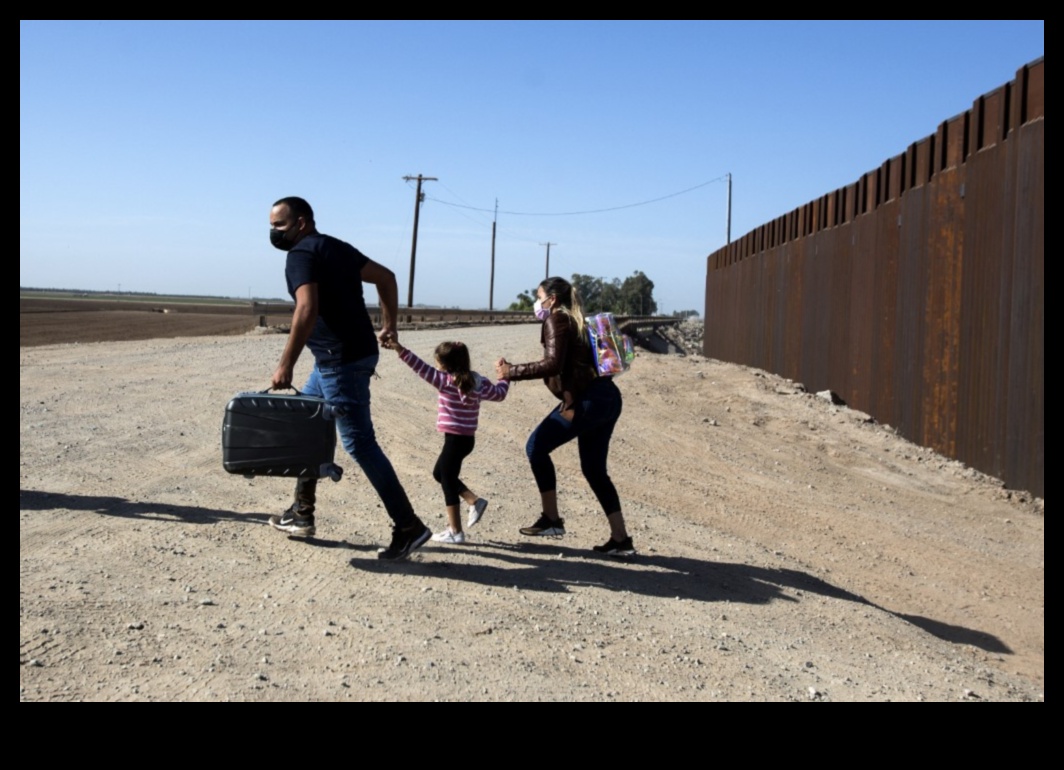
I. Introduction
II. History of Cuban Immigration
III. Current State of Cuban Immigration
IV. Benefits of Cuban Immigration
V. Drawbacks of Cuban Immigration
VI. The Cuban Adjustment Act
VII. The Cuban Refugee Program
VIII. The Cuban Family Reunification Program
IX. The Cuban Parole Program
X. FAQ
| Topic | Answer |
|---|---|
| Cuban-immigrants | Cubans who have immigrated to the United States. |
| Special-treatment | Cuban immigrants receive a number of benefits that other immigrants do not, such as the ability to apply for permanent residency after one year of living in the United States. |
| Cuban-americans | Cubans who are citizens or permanent residents of the United States. |
| Immigration | The process of moving to a new country to live permanently. |
| Cuba | A country located in the Caribbean Sea. |

II. History of Cuban Immigration
Cuban immigration to the United States has a long and complex history. The first Cubans arrived in the United States in the 16th century, as part of the Spanish colonial empire. However, large-scale Cuban immigration did not begin until the late 19th century, when Cubans began to flee the island in large numbers to escape political oppression and economic hardship.
The Cuban Revolution of 1959 led to a further wave of Cuban immigration, as thousands of Cubans fled the communist regime of Fidel Castro. This wave of immigration continued into the 1980s, when the Mariel boatlift brought over 125,000 Cubans to the United States.
Since the 1990s, Cuban immigration has slowed down, but it has continued at a steady pace. In 2016, there were over 120,000 Cubans living in the United States.
III. Current State of Cuban Immigration
Cuban immigration to the United States has been on the decline in recent years. In 2017, the number of Cubans who arrived in the United States legally was 44,089, down from 53,999 in 2016. This decline is due to a number of factors, including the tightening of U.S. immigration policies under the Trump administration and the economic crisis in Cuba.
Despite the decline in immigration, there are still a significant number of Cubans living in the United States. According to the 2010 U.S. Census, there were 1.8 million Cubans living in the United States, making them the fifth largest Hispanic group in the country. Cubans are concentrated in Miami-Dade County, Florida, where they make up over a quarter of the population.
Cuban immigrants have made significant contributions to the United States. They have founded businesses, created jobs, and contributed to the economy. They have also played a role in American politics and culture.
The future of Cuban immigration to the United States is uncertain. The Trump administration has made it clear that it is not in favor of mass immigration, and it has taken steps to tighten U.S. immigration policies. However, the economic crisis in Cuba is likely to continue to push Cubans to seek a better life in the United States.
IV. Benefits of Cuban Immigration
There are a number of benefits to Cuban immigration, including:
- Cuban immigrants are eligible for the Cuban Adjustment Act, which allows them to apply for permanent residency after one year of living in the United States.
- Cuban immigrants are also eligible for the Cuban Refugee Program, which provides them with financial assistance, job training, and other services.
- Cuban immigrants are more likely to have a college degree than other immigrants.
- Cuban immigrants are more likely to be employed than other immigrants.
- Cuban immigrants are more likely to start their own businesses than other immigrants.
Overall, Cuban immigrants are a positive addition to the United States economy and society. They are more likely to be educated, employed, and entrepreneurial than other immigrants. They also contribute to the U.S. economy by paying taxes and starting businesses.

V. Drawbacks of Cuban Immigration
There are a number of drawbacks to Cuban immigration, including:
- Cuban immigrants may face discrimination and prejudice from other Americans.
- Cuban immigrants may have difficulty finding jobs that match their skills and education.
- Cuban immigrants may have difficulty learning English.
- Cuban immigrants may have difficulty adjusting to a new culture.
Despite these drawbacks, Cuban immigration can also be beneficial to the United States. Cuban immigrants bring a variety of skills and talents to the country, and they have helped to make the United States a more diverse and vibrant place.

VI. The Cuban Adjustment Act
The Cuban Adjustment Act (CAA) is a United States immigration law that allows Cuban nationals who have been physically present in the United States for at least one year to apply for a green card, which grants them lawful permanent resident status. The CAA was originally enacted in 1966 in response to the Cuban Revolution, and it has been amended several times since then.
The CAA has been controversial since its inception, with critics arguing that it gives Cuban immigrants preferential treatment over immigrants from other countries. Supporters of the CAA argue that it is necessary to provide a pathway to citizenship for Cubans who have fled their country due to political persecution.
The CAA has been the subject of several legal challenges, and the Supreme Court has ruled on its constitutionality several times. In 1980, the Supreme Court ruled in _Regan v. Wald_ that the CAA is constitutional, even though it provides preferential treatment for Cuban immigrants. In 2000, the Supreme Court ruled in _INS v. Cardoza-Fonseca_ that the CAA does not apply to Cubans who have been living in the United States for less than one year.
The CAA continues to be a controversial law, and it is likely to remain so in the future. However, it is clear that the CAA has had a significant impact on the history of Cuban immigration to the United States.
The Cuban Refugee Program
The Cuban Refugee Program was a United States government program that provided financial assistance, medical care, and resettlement services to Cuban refugees who arrived in the United States after 1959. The program was created by President John F. Kennedy in 1961 in response to the Cuban Revolution.
The Cuban Refugee Program was administered by the Department of Health, Education, and Welfare (HEW). The program provided a variety of services to Cuban refugees, including:
- Financial assistance
- Medical care
- Resettlement services
- English language training
- Vocational training
The Cuban Refugee Program was funded by the United States Congress. The program ended in 1978, when the last of the Cuban refugees who had arrived in the United States under the program were resettled.
The Cuban Refugee Program was a successful program that helped to resettle thousands of Cuban refugees in the United States. The program provided the refugees with the financial assistance, medical care, and resettlement services that they needed to rebuild their lives in a new country.

VIII. The Cuban Family Reunification Program
The Cuban Family Reunification Program is a U.S. government program that allows Cuban citizens to immigrate to the United States if they have a close relative who is already a U.S. citizen or permanent resident. The program was created in 1966 in response to the Cuban Revolution, and it has helped to reunite thousands of Cuban families.
To qualify for the Cuban Family Reunification Program, the U.S. citizen or permanent resident must be a close relative of the Cuban citizen. Close relatives include spouses, parents, children, siblings, and grandparents. The Cuban citizen must also be a resident of Cuba and must have a valid passport.
The Cuban Family Reunification Program is a complex process, and it can take several years for a Cuban citizen to be approved for immigration. However, the program has helped to reunite thousands of Cuban families, and it is a valuable tool for those who are seeking to reunite with their loved ones in the United States.
IX. The Cuban Parole Program
The Cuban Parole Program is a United States government program that allows Cuban nationals who are in the United States without legal status to apply for a parole. If granted parole, Cuban nationals are allowed to remain in the United States and apply for a green card after one year.
The Cuban Parole Program was established in 1966 in response to the Cuban Revolution. The program was designed to allow Cuban nationals who were fleeing the communist regime to come to the United States and start a new life.
The Cuban Parole Program is open to Cuban nationals who are in the United States without legal status. Applicants must be able to prove that they are Cuban nationals and that they have been in the United States for at least one year.
The Cuban Parole Program is a complex process. Applicants must submit a detailed application and supporting documents. The application process can take several months.
If granted parole, Cuban nationals are allowed to remain in the United States and apply for a green card after one year. The green card process can take several months to several years.
The Cuban Parole Program is a valuable opportunity for Cuban nationals who are seeking to build a new life in the United States. The program has helped thousands of Cuban nationals to start a new life in the United States.
Q: Why do Cuban immigrants get special treatment?
A: There are a few reasons why Cuban immigrants are treated differently than other immigrants.
History: Cuban immigrants have a unique history in the United States. They were the first large group of refugees to come to the United States after the Cuban Revolution in 1959. This gave them a special status in the eyes of the American government.
Politics: The United States has a long history of supporting the Cuban people in their struggle for freedom. This has led to a close relationship between the United States and Cuba, and it has also made Cuban immigrants a priority for the American government.
Economics: Cuban immigrants have a strong track record of success in the United States. They are more likely to start businesses, create jobs, and pay taxes than other immigrants. This has made them a valuable asset to the American economy.
Q: What are the benefits of Cuban immigration?
A: Cuban immigrants have brought a number of benefits to the United States.
Economic: Cuban immigrants have contributed significantly to the American economy. They have created jobs, started businesses, and paid taxes. They have also helped to boost the economy by spending money on goods and services.
Cultural: Cuban immigrants have enriched the American cultural landscape. They have brought their own unique culture and traditions to the United States, and they have helped to make the country more diverse.
Political: Cuban immigrants have played an important role in American politics. They have helped to elect pro-Cuban politicians, and they have advocated for policies that support the Cuban people.
Q: What are the drawbacks of Cuban immigration?
A: There are a few drawbacks to Cuban immigration.
Cost: Cuban immigrants can be expensive to integrate into the United States. They need to learn English, find jobs, and find housing. They may also need to access social services.
Crime: Cuban immigrants are more likely to commit crimes than other immigrants. This is likely due to the fact that they are more likely to live in poverty and have less access to education and job opportunities.
Social problems: Cuban immigrants can sometimes face social problems. They may be discriminated against, and they may have difficulty fitting into American society.